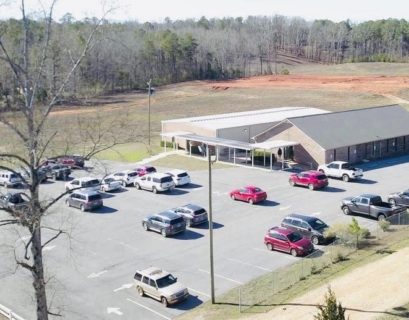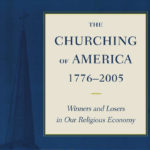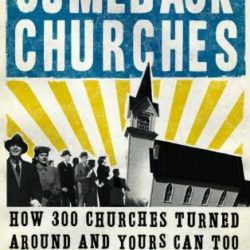A Survey of Rural Pastors Who Led Turnaround after Season of Plateau or Decline
By Paul D. Maunu
Answering the question, what factors led rural pastors from a season of plateau or decline to turnaround; producing church growth, compelled this research. Spiritual fervency, productive relationships, and community outreach represented the key to a turnaround. This thesis sections include; research methodology, literature review, findings and analysis, theological reflections, and application. The research methodology concerning rural church turnaround; focused on the context of the study, research methodology, and obtaining results from the rural context. The literature review included biblical expression, rural ministry challenges, and valuing rural ministry. The empirical research portion addressed findings and analysis from ten interviews of pastors leading turnaround, detailing expected findings, key components, and contributing factors. Expected findings considered programs, leadership factors, pulpit ministry, and other challenges.
The key components identified include spiritual fervency, productive relationships, and community outreach. Spiritual fervency examined prayer, spiritual encounters, and personal refreshment. Productive relationships included intentional investment, peer friendship, and relationships among church leaders. Community outreach investigated mentality shift, servanthood, and catalytic ideas. These factors provided the commonalities and framework for the turnaround in the ten churches studied. Theological reflections on Orthodoxy, Orthopraxis, and Orthopathos in the rural setting assisted in the reflection and consideration. Applications from the research addressed the following: establishing the call to rural, pursuing spiritual growth, initiating outreach, and establishing relationships. The methodology, literature review, findings and analysis, theological reflections, and application form the major sections of the thesis.
Discouragement and its impact in the rural setting require reflection and significant consideration. Kathleen Norris wrote in Acedia and Me about the ancient term of acedia she explained that the Greek root means the absence of care with the person afflicted by it, either refusing to care or not capable of doing so.[1] Brad Roth, author of God’s Country, warned against acedia, which he characterized as spiritual despair that causes a lack of care for life, for God, for others, and even for ourselves.[2] Roth believed that this element of despair proved challenging in the rural context. Depression and discouragement can represent major challenges for the rural pastor. Whether considered within the context of acedia, spiritual warfare, or clinical depression these times of discouragement impact ministry.
Moving beyond the challenges of ministry when in plateau or decline seemed an important issue to consider. When a church encounters a season of no growth, discouragement can impact the pastor, leadership, and church members. A church that loses people can move towards despair; leading other members to consider leaving, placing pressure on pastoral leadership to ‘righting the ship.’ Neil Anderson and Charles Mylander in Setting Your Church Free said, “Your leaders may ache over good people who have chosen to go to other churches and left the burdens of ministry to an overworked few.”[3] Seasons of plateau and decline tend to impact many within the church, yet the minister tends to carry the weight of the burden during these seasons.
Ministers may experience defeat resulting in leaving the church and at times the ministry. Pursuing the accounts of ministers that overcame the factors that hinder progress in the rural setting formed the framework for this research. The narrative of pastors that battled through the discouraging times provided a paradigm for others to consider; extending hope to the pastor struggling to establish turnaround. This research set out to discover pathways of optimism for the health of pastors and strength for churches in rural America.
A pastoral breakthrough provided a key component for the research. Finding and documenting cases of moving beyond significant challenges to places of victory marked the research. These pastoral interviews developed out of contact with various leaders who connected me with pastors that fit the criteria of this research.
The research criteria necessitated experiences uncovered that included turnaround from a state of plateau or decline. This element can provide hope and encouragement to the pastor engaging in the battle to overcome the season of challenge. This research may stir the belief that growth can happen through the difficult seasons of ministry. The rural context often tends to get overlooked when celebrating the stories of success. Uncovering accounts that demonstrated the plausibility for ministry turnaround offered value.
The situations discovered in this research varied in many ways; the challenges inherent in the church and local community dynamics presented unique obstacles to turnaround. This material does not provide a one size fits all approach. Principles came forth offering ideas to consider and apply to multiple rural ministry situations. After the interview process concluded, the categorization and analysis of the data took place. These commonalities offered breakthroughs and insights suggesting hope for struggling rural churches.
The ability to implement change might serve as the most vital component of moving from plateau and decline to turnaround. The discovery of what motivated change proved foundational. The change factors may vary according to circumstances within the church, community, and minister’s personal life. The pastors surveyed found pathways to lead their churches from plateau or decline to growth. Some components that produced turnaround proved similar while other aspects tended to fit individual situations.
This thesis details methods used to study rural church turnaround, focusing on the context of the study, research methodology, and obtaining results from the rural context. The literature review includes biblical expression, rural ministry challenges, and valuing rural ministry. The main portion of this thesis addresses findings and analysis from the ten interviews of pastors leading turnaround, detailing; expected findings, key components, and contributing factors. The key components include spiritual fervency, productive relationships, and community outreach which form the quintessential elements from the research. These factors provide the framework for turnaround. Theological reflections on Orthodoxy, Orthopraxis, and Orthopathos in the rural setting garnered exploration. Applications from the research address; establishing the call to the rural context, pursuing spiritual growth, initiating outreach, and establishing relationships.
[1] Kathleen Norris, Acedia & Me: A Marriage, Monks, and a Writer’s Life (New York: Riverhead Books, 2008), 3. Kindle Edition.
[2] Brad Roth, God’s Country: Faith, Hope, and the Future of the Rural Church (Harrisonburg, VA: Herald Press, 2017), 41. Kindle Edition.
[3] Neil T. Anderson and Charles Mylander, Setting Your Church Free: A Biblical Plan for Corporate Conflict Resolution (Minneapolis, MN: Bethany House, 2005), 154-155.
[4] Glenn Daman interview with Paul Maunu, January 22, 2020.
[5] Peter Scazzero, Emotionally Healthy Spirituality: It’s Impossible to be Spiritually Mature While Remaining Emotionally Immature (Grand Rapids, MI: Zondervan, 2006), 117.
[6] Henry Cloud, Necessary Endings: The Employees, Business, and Relationships That All of Us Have to Give Up in Order to Move Forward (New York, NY: Harper Collins, 2010), 112.



















